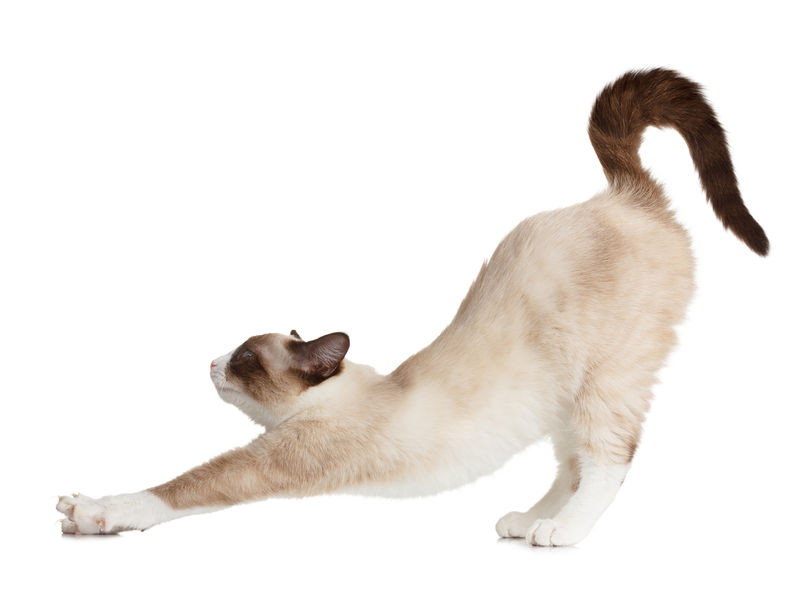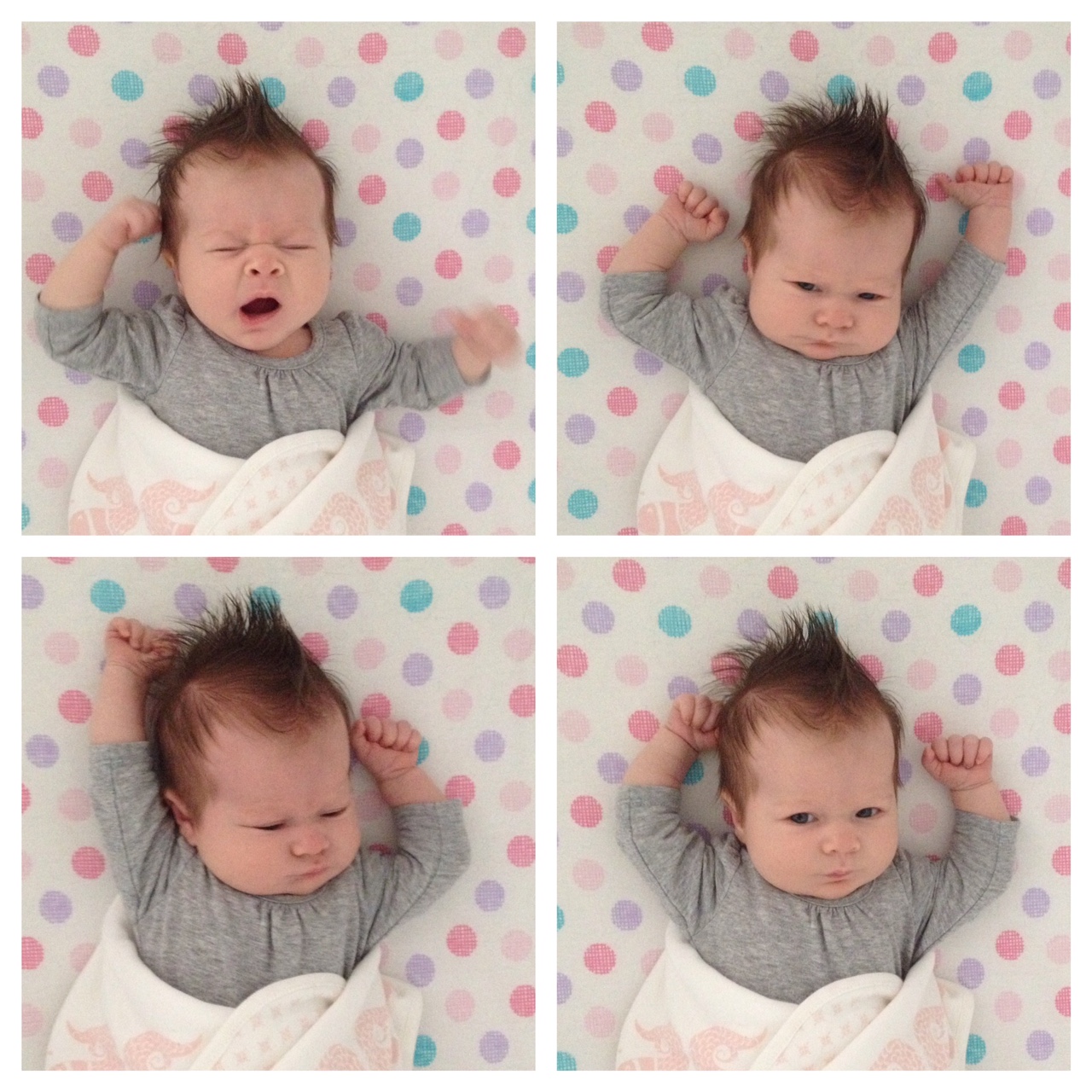Vous pouvez écouter le podcast de Sarah sur ce sujet ici :
Qu'est-ce que la pandiculation ?
Pandiculation is generally defined as the act of stretching oneself and yawning, especially upon waking. However, our automatic pandicular response has far more significance than simply prompting us to stretch and yawn.
As you’ll learn in this post, pandiculation is a fundamental part of our neuromuscular functioning. In fact, when it comes to maintaining our health, pandiculation is equal to exercise and eating a balanced diet. When we stop pandiculating, our muscles become tight; we experience pain, poor posture, and limited movement; and over time, the structure of our body breaks down.
Comment fonctionne la pandiculation naturelle ?
Pandiculation is our nervous system’s natural way of waking up our sensorimotor system and preparing us for movement. Humans, along with all vertebrate animals, tend to automatically pandiculate when we wake up or when we’ve been sedentary for a while. If you’ve ever seen a dog or cat arch their back when they get up from a nap, or watched a baby stretch their arms and legs as they wake up, you’ve witnessed the pandicular response. It may look like a stretch, but when we pandiculate, we’re actually contracting muscles that have been inactive.


La pandiculation est notre réponse innée aux sensations de manque de mouvement et à l'accumulation de tension dans nos muscles, qui vont souvent de pair.
Pandiculation sends biofeedback to our nervous system regarding the level of contraction in our muscles, thereby helping to prevent the buildup of chronic muscular tension. This is an extremely important function of the pandicular response. A pandiculation contracts and releases muscles in such a way that the gamma loop, a feedback loop in our nervous system that regulates the level of tension in our muscles, is naturally reset. This resetting reduces muscular tension and restores conscious, voluntary control over our muscles.
Preventing the buildup of tension in our muscles is critical to maintaining healthy posture and movement throughout our lives. Fetuses have been observed pandiculating in the womb, showing how deeply ingrained the pandicular response is in our nervous system and how fundamental it is to our musculoskeletal functioning.
Malheureusement, à mesure que nous vieillissons et développons des façons habituelles de nous tenir debout et de bouger, notre réponse pandiculaire naturelle ne peut généralement pas contrecarrer tout l'apprentissage qui se produit dans notre système nerveux. Nos modes de vie répétitifs et sédentaires sont très différents des modes de vie actifs de nos ancêtres. Nous avons tendance à augmenter la tension musculaire à un rythme beaucoup plus rapide qu'eux parce que nous bougeons moins et avons tendance à avoir moins de variété dans nos mouvements. Au fur et à mesure que nous accumulons des tensions musculaires et que nous perdons conscience et contrôle de nos muscles, notre réponse pandiculaire devient souvent inhibée.
La pandiculation comme mouvement volontaire
Thomas Hanna, the founder of Clinical Somatic Education, studied neurophysiology and the effects of the pandicular response. He explored how pandiculation directly addressed the habitual muscular tension that was the underlying cause of his clients’ chronic pain and posture and movement issues. Hanna developed hands-on movements and self-care exercises that made use of the pandicular response.
These “voluntary pandiculations” begin with a concentric contraction: tension in the muscle increases while the muscle fibers shorten, bringing the origin and insertion of the muscle closer together. This is followed by an eccentric contraction, in which muscles are engaged while they lengthen under load. Picture what your biceps are doing as you lower a dumbbell, for example (Illustration 10). The muscles are slowly lengthening, but are still engaged as long as you hold the weight.
A voluntary pandiculation must be performed very slowly and consciously so that the nervous system is able to sense and integrate the biofeedback that the movement provides. The opposing muscles should not engage during the eccentric contraction phase of the pandiculation. And the resistance, or load, must be applied so that the actively lengthening muscles are fully engaged throughout the movement’s range of motion.
Dans une pandiculation manuelle, le praticien fournit une résistance aux muscles qui s'allongent activement. Ces mouvements pratiques peuvent être effectués dans n'importe quelle position par rapport à la gravité, car le praticien peut ajuster la direction de la résistance au fur et à mesure que l'élève se déplace dans l'amplitude de mouvement.
La plupart des exercices d'auto-soins développés par Hanna sont des auto-pandiculations dans lesquelles la gravité fournit la seule résistance. Cela signifie que vous devez être dans des positions spécifiques par rapport à la gravité afin de pandiculer correctement les groupes musculaires.
Hanna’s voluntary pandiculations proved to be groundbreaking. It was the first active technique that a somatic educator had employed to any significant degree. Previous somatic educators had focused on passive movement techniques that improved function by increasing sensorimotor awareness and relaxing the nervous system. Hanna found, however, that voluntary movement was the most efficient and effective way to unlearn chronic, involuntary muscular contraction and retrain posture and movement patterns.
La pandiculation a rapidement réduit la tension musculaire, et comme cela a été accompli par l'apprentissage plutôt que par la manipulation, les effets étaient généralement de longue durée. Hanna a d'abord enseigné à ses élèves des pandiculations axées sur la contraction et la libération de petits groupes de muscles. Une fois que ses élèves ont commencé à réduire leur tension musculaire involontaire, il leur a enseigné des mouvements plus larges qui intégraient leurs relâchements musculaires dans des schémas de mouvements naturels et efficaces de tout le corps.
Hanna codified his methods into three standard lessons based on the three postural patterns he observed in his clients, an approach he called “Clinical Somatic Education.” Following each hands-on lesson, Hanna gave his students simple self-care exercises so they could learn how to take care of themselves rather than rely on a practitioner. While earlier methods of somatic education were relatively free-form, Hanna’s was systematized and easy for people to practice at home.
In 2022, a study of voluntary pandiculation was published in a peer-reviewed journal for the first time. It was a study of 103 patients with chronic lower back pain and/or neck pain. After the patients completed an average of three sessions, followed by practicing the exercises at home, their lower back pain was reduced by 81% and their neck pain was reduced by 80%.
Pourquoi Somatiques Cliniques est si efficace
One of my favorite things that a client has ever said to me is, “You know how my daughter stretches when she wakes up from a nap? I noticed myself doing that this week, and I haven’t done that in a very long time!” After just one lesson in Clinical Somatic Education, this client had already experienced her natural pandicular response kicking in.
Le système nerveux humain est plastique, ce qui signifie que sa fonction change en fonction de l'apport que nous lui donnons. Notre système nerveux est capable de changer et d'apprendre tout au long de notre vie. Tout comme notre système nerveux apprend à garder certains muscles tendus, il peut aussi apprendre à relâcher cette tension chronique. Comme l'a découvert Thomas Hanna, la pandiculation est le moyen le plus efficace et le plus efficace de relâcher les tensions chroniques, de soulager les courbatures et les douleurs musculaires et de rétablir le contrôle musculaire volontaire total.
Clinical Somatic Education is so effective because it is far more than a method of movement that someone made up—it’s an extension of our innate neuromuscular functioning. The technique of voluntary pandiculation allows us to reduce our resting level of muscle tension to baseline levels, restore our natural posture and movement patterns, and regain full voluntary control of our muscles.
Pratiquant Somatiques Cliniques exercices vous apprend à utiliser la pandiculation volontaire pour réduire votre tension musculaire et restaurer une posture et un mouvement naturels. Cela augmente également votre conscience sensorimotrice, de sorte que vous ressentirez probablement plus souvent votre réponse pandiculaire naturelle.
Pandiculation is so fundamental to maintaining our health that it is equal to exercising and eating a balanced diet. If we want to prevent musculoskeletal pain, poor posture, limited movement, and structural breakdown as we age, we must pandiculate our muscles every day.
If you want to learn Clinical Somatics self-pandiculation exercises, a great place to start is the online Level One Course.
Lecture recommandée:
The Pain Relief Secret: How to Retrain Your Nervous System, Heal Your Body, and Overcome Chronic Pain by Sarah Warren, CSE
Somatics: Reawakening the Mind’s Control of Movement, Flexibility and Health by Thomas Hanna

